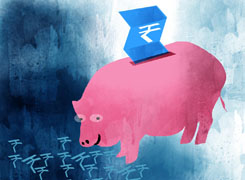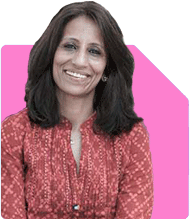42-Year-Old With 42 Lakh in Mutual Funds, 300 GRM Gold, 15 Lakh FD, and 9 Years of PPF - Where to Invest 10 Lakh for Long-Term Returns?
Ramalingam Kalirajan |10894 Answers |Ask -Follow
Mutual Funds, Financial Planning Expert - Answered on Sep 22, 2024
He has an MBA in finance from the University of Madras and is a certified financial planner.
He is the director and chief financial planner at Holistic Investment, a Chennai-based firm that offers financial planning and wealth management advice.... more

Sir, I am 42-Year-old & I have already Portfolio of Mutal fund of 42 Lakh (lumpsum / SIP) currently I do monthly 35K sip in mutual fund. Also, currently I have 300 GRM gold with me & also I have Rs.15 Lakh of FD. Also, I invest 1.5 Lak every year in PPF from Lat 9 years. Now I have 10 Lakh Rupees with me so can you guide me where to invest for long term good returns
Mutual Fund Investments
Your existing mutual fund portfolio of Rs. 42 lakh and Rs. 35,000 SIP is commendable.
Mutual funds are ideal for long-term wealth creation.
Ensure your mutual funds are diversified across large-cap, mid-cap, and small-cap categories.
Add funds focused on different sectors to reduce risk and enhance returns.
Don’t invest in index funds. Actively managed funds perform better, especially in fluctuating markets.
Consider investing your new Rs. 10 lakh in actively managed funds to enhance long-term growth.
Consult a Certified Financial Planner (CFP) to regularly review your mutual fund portfolio.
Regular funds through a Mutual Fund Distributor (MFD) offer better guidance and service.
Gold as a Hedge, Not Growth
You hold 300 grams of gold. Gold is great as a hedge against inflation.
But it’s not ideal for long-term wealth generation. Its price fluctuates and doesn’t grow as fast as equity.
Avoid adding more gold to your portfolio.
Keep your current gold holding as it can act as a safety net during tough times.
Fixed Deposits for Safety, Not Growth
You have Rs. 15 lakh in FD, which is excellent for safety.
But the returns are low compared to equity investments.
Keep a portion of FD for emergencies. Ideally, 6-12 months of expenses should be set aside.
Avoid adding more funds to FD for long-term growth.
Inflation reduces the purchasing power of FD returns over time.
PPF for Tax-Free Compounding
You have been contributing Rs. 1.5 lakh annually to PPF for 9 years.
PPF is a great option for risk-free, tax-saving investment. It offers guaranteed returns with tax benefits.
It will compound tax-free over time, offering stable returns.
Continue investing in PPF as it balances your high-risk investments with a safe, government-backed option.
Evaluating Rs. 10 Lakh for Investment
You now have Rs. 10 lakh ready to invest. Let’s evaluate options with long-term returns.
1. Increase SIP in Mutual Funds
The best option is to increase your SIP in diversified mutual funds.
Long-term SIPs can create wealth through the power of compounding.
Invest the Rs. 10 lakh in a staggered way, splitting it into SIPs over the next 12-18 months.
This will help you avoid market volatility and benefit from rupee cost averaging.
Actively managed funds with a Certified Financial Planner (CFP) will help you maximise returns.
Diversify across large, mid, and small-cap funds for a balanced portfolio.
Ensure you invest in regular plans through an MFD for personalised guidance.
2. Hybrid Funds for Balanced Growth
Consider hybrid mutual funds. They combine the benefits of equity and debt.
Hybrid funds are great for long-term growth with a lower risk profile.
They provide a balanced approach and smooth out market fluctuations.
Use hybrid funds to diversify your Rs. 10 lakh investment.
They are particularly suitable for investors looking for a mix of safety and growth.
3. International Mutual Funds for Global Exposure
Explore international mutual funds to diversify beyond India.
These funds invest in global companies, providing exposure to developed markets.
Global diversification reduces risk and captures growth opportunities worldwide.
A portion of your Rs. 10 lakh can be allocated to international funds.
Consult your Certified Financial Planner (CFP) for specific recommendations and advice.
4. Balanced Allocation to Debt Mutual Funds
A portion of your Rs. 10 lakh can also be invested in debt mutual funds.
Debt funds provide stability and regular returns with lower risk.
They are a good option to balance the high-risk equity investments in your portfolio.
Debt funds can be liquidated quickly in case of emergencies, making them a good substitute for FDs.
Building a Well-Rounded Investment Strategy
1. Portfolio Diversification
Diversify your portfolio across asset classes: equity, debt, gold, and PPF.
Each asset class serves a different purpose – equity for growth, debt for stability, gold for hedging, and PPF for tax-free returns.
Avoid investing more in low-growth assets like gold and FD.
Ensure your mutual fund portfolio is spread across different market sectors and capitalisation.
Review your portfolio regularly with your Certified Financial Planner (CFP) to stay aligned with your goals.
2. Rebalancing and Monitoring
Regularly review your portfolio performance.
Rebalance your investments every 1-2 years to maintain the desired asset allocation.
Equity markets can be volatile, and your risk tolerance may change over time.
Consult a Certified Financial Planner (CFP) to rebalance your portfolio for long-term goals.
3. Emergency Fund
Always maintain an emergency fund to cover 6-12 months of expenses.
This fund should be kept in liquid assets like FD or debt mutual funds.
Avoid investing your emergency fund in high-risk assets like equities.
Use the Rs. 10 lakh to increase your emergency fund if you don’t have one already.
4. Insurance Coverage
Ensure you have adequate insurance coverage.
Term insurance is necessary for financial protection.
Health insurance is also essential to cover medical expenses.
Avoid mixing insurance with investment products like ULIPs or endowment plans.
If you hold LIC or investment-cum-insurance policies, consider surrendering them.
Reinvest the surrendered amount in mutual funds for better growth.
5. Tax Efficiency
Plan your investments for maximum tax efficiency.
PPF offers tax-free returns and is a great tax-saving tool.
Long-term investments in mutual funds also offer favourable tax treatment.
Ensure that your portfolio is structured to take advantage of tax deductions under Sections 80C, 10(10D), and 80D.
Final Insights
You’ve built a solid portfolio with mutual funds, gold, FD, and PPF investments. You now have Rs. 10 lakh to invest, and the best approach is to increase your mutual fund SIP. Avoid low-growth assets like gold and FD for long-term investments. Use hybrid, debt, and international funds to diversify your portfolio. Continue investing in PPF for stable, tax-free returns.
Regular reviews with your Certified Financial Planner (CFP) are key to maintaining a balanced and profitable portfolio. Keep your financial goals in focus, and rebalance your investments as needed. Building a strong emergency fund and ensuring adequate insurance coverage is essential for financial security.
By following these strategies, you can achieve long-term wealth creation and financial stability. Ensure that your investments are aligned with your risk tolerance and future goals.
Best Regards,
K. Ramalingam, MBA, CFP,
Chief Financial Planner,
www.holisticinvestment.in
Instagram: https://www.instagram.com/holistic_investment_planners/
You may like to see similar questions and answers below
Ramalingam Kalirajan |10894 Answers |Ask -Follow
Mutual Funds, Financial Planning Expert - Answered on Jul 27, 2024
Ramalingam Kalirajan |10894 Answers |Ask -Follow
Mutual Funds, Financial Planning Expert - Answered on Oct 24, 2024
Milind Vadjikar | Answer |Ask -Follow
Insurance, Stocks, MF, PF Expert - Answered on Oct 20, 2024
Ramalingam Kalirajan |10894 Answers |Ask -Follow
Mutual Funds, Financial Planning Expert - Answered on Dec 09, 2024
Ramalingam Kalirajan |10894 Answers |Ask -Follow
Mutual Funds, Financial Planning Expert - Answered on Aug 01, 2025
Mayank Chandel |2576 Answers |Ask -Follow
IIT-JEE, NEET-UG, SAT, CLAT, CA, CS Exam Expert - Answered on Dec 17, 2025
Radheshyam Zanwar |6747 Answers |Ask -Follow
MHT-CET, IIT-JEE, NEET-UG Expert - Answered on Dec 16, 2025
Shalini Singh |181 Answers |Ask -Follow
Dating Coach - Answered on Dec 16, 2025
Patrick Dsouza |1429 Answers |Ask -Follow
CAT, XAT, CMAT, CET Expert - Answered on Dec 16, 2025
Nayagam P P |10858 Answers |Ask -Follow
Career Counsellor - Answered on Dec 16, 2025
Nayagam P P |10858 Answers |Ask -Follow
Career Counsellor - Answered on Dec 16, 2025
Samraat Jadhav |2510 Answers |Ask -Follow
Stock Market Expert - Answered on Dec 16, 2025
Samraat Jadhav |2510 Answers |Ask -Follow
Stock Market Expert - Answered on Dec 16, 2025
Nayagam P P |10858 Answers |Ask -Follow
Career Counsellor - Answered on Dec 16, 2025
Nayagam P P |10858 Answers |Ask -Follow
Career Counsellor - Answered on Dec 16, 2025



























